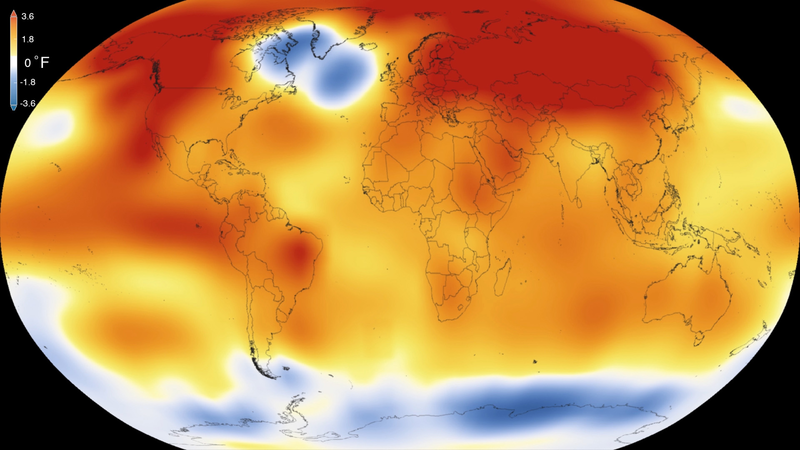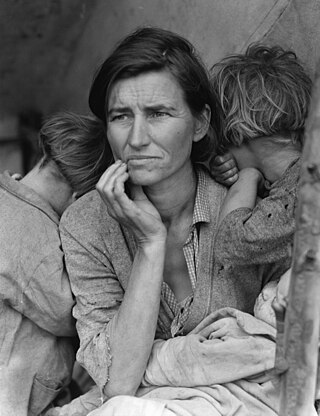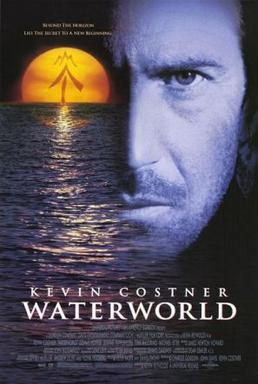Landschlacht, Switzerland, 6 December 2016
Why does the United States invade a country?

Historically, wars are fought over scarce resources, with religion or politics as convenient excuses or triggers for the commencement of hostilities.
So what does Canada possess in greater abundance than the United States?
(Besides being the 2nd biggest country in the world while the US is simply the 4th biggest?)
Fresh water.
Canada has 40% of the world´s total fresh water.

Now the idea of Canada and the United States going to war over water…
Unthinkable.
Right?
Well, let´s consider a few factors.
Historically, war between Canada and the United States wouldn´t be a novelty, for it has happened before.
Americans wanted to invade Canada during the US Revolution.
We fought one another in the War of 1812 (1812 – 1814).

America claims it was a war against the British and that they won.
But the British were mostly preoccupied with Napoleon on the European continent and so it was mostly Canadians who fought to protect their homes.
And a war where no real gain is made is not a victorious war.
Neither side gained as much as a single hectare of the other side´s territory.
Though in retrospect, both Canada and the United States have this war to thank for the strengthening of their own national identities.

It was the burning of Baltimore and Washington DC that resulted in the Star-Spangled Banner and the White House.


It was the defence of our land that forged the Canadian identity and the determination of maintaining our identity separate from the Americans.
So throughout both our histories US-Canada relations have not always been in agreement and Canada is quite fine with that.
We shared the same battlefields at times but not always.
We both fought in both World Wars, the Korean War and Afghanistan.
The US had other allies in Vietnam, in Iraq and other theatres of war it has chosen to involve itself in.
We were America´s steam valve for escaped slaves, Vietnam draft dodgers and unhappy political exiles.
Being separate from America, Canada has avoided civil war (though we have had rebellions), McCarthyism (though Communism did worry us from time to time), racial unrest (though our record is not unblemished), the banking crisis or a Wild West.
Canada is happy not to feel afraid of our neighbours foreign or domestic, despite not having anywhere near the military power the US possesses.
Education in Canada is not cheap, but certainly not as expensive as the American equivalent.
We have universal health care which we treasure and which works well for the most part.
We pride ourselves on our openness, our politeness, our multiculturalism.
We don´t hate America, but we remain vigilant and wary, but not to the point of paranoia.
We share many values, have signed many cooperative agreements, are members in many of the same international organisations.
But do Canadians completely trust America?
No.
For America has a history of maintaining its own self-interests paramount over any previous agreements with other nations it may have had.
So, could Canada find itself one day being invaded by the United States over the question of water?
It is not as unthinkable a scenario as one might imagine.
Let´s look at America environmentally.
In the news, debate still rages over Standing Rock and the building of the Dakota Access Pipeline.

Energy companies in their quest for profits gladly risk the destruction of the environment for short term revenues.
As rivers lead to oceans and petroleum-bearing sea vessels, building pipelines that follow the course of these rivers seems to be the path of least resistance for the planning of pipeline routes.
The real and probable danger of damage to the American environment is simply an accident waiting to happen.
The Ogallala Aquifer, one of the world´s largest aquifers, lies under 174,000 square miles (450,000 square km) of portions of eight US states (South Dakota, Nebraska, Wyoming, Colorado, Kansas, Oklahoma, New Mexico and Texas) and irrigates 30% of the ground water used for irrigation in the United States or 80% of the High Plains area – the Breadbasket of America, the provider of much of the food that Americans consume.

The Ogallala Aquifer makes much of the livestock, corn, wheat and soybean production and consumption in the United States possible.
Intensive farming has reduced the Aquifer´s storage capacity by nearly 10%.
Belated conservation practices (terracing, crop rotation, more efficient centre pivot irrigation and drip irrigation practices) have barely made a dent in the drainage of the Aquifer.
Once depleted it would take over 6,000 years to replenish the Aquifer naturally through rainfall.
The proposed construction of the 1,661 mile / 2,673 km Keystone XL pipeline to carry oil from the Athabaska oil sands of Alberta to refineries near Houston, Texas, crosses the eastern part of the Nebraska Sandhills and risks the possibility of contamination from spilled dilute bitumen into the Ogallala.
Destroy the Ogallala and life in America is gravely damaged.
Let´s look at global warming.
Despite naysayers and conspiracy theorists, global warming and its resulting climatic changes is and has been scientifically measureable.

Above: 2015: The warmest global year on record (since 1880), NASA
Global warming, no matter what post truth feelings one wishes to embrace, is real.
Global temperatures and sea levels are rising and deserts are expanding.
Extreme weather events are more frequent, including droughts, heat waves, flooding, abnormally heavy snowfalls and increased levels of acidification of our oceans.
This can lead to less food as a result of decreasing crop yields and depleted numbers of fish.
Some of the effects of global warming are already being felt all over the planet, while others even more dangerous may not occur for decades, centuries or even millenia.
But increasing population growth resulting in increased levels of the production of methane and carbon dioxide due to our reliance on fossil fuels hastens the process of global warming.
We are our own enemy.
The American and Chinese economies are responsible for the greatest amounts of carbon dioxide emissions produced every year, yet it is these economies that remain the least concerned about the effects they are producing.
Could the Dust Bowl return to America?
The Dust Bowl, also known as the Dirty 30s, was a period of severe dust storms that greatly damaged the ecology and agriculture of the American Great Plains and the Canadian prairies during the 1930s.

During the drought of the 1930s, the soil turned to dust and many crops failed, making the Great Depression even more of a nightmare for many Americans.

And the possibility of another Dust Storm ravaging America once again caused by pollution, global warming or chemical attack is not so unforeseeable as the 2014 sci-fi film Interstellar showed us.

In the Dirty 30s, Canada too was affected by the Dust Bowl and the Great Depression, but the possibility of Canada being isolated from a future Dust Bowl striking America might be possible as the American environment is being destroyed more rapidly than the Canadian one.
In the graphic novel We Stand on Guard (pictured above), it is suggested that America uses the terrorist destruction of the White House as an excuse to invade Canada.
(We did do this during the War of 1812, though America used as an excuse to begin hostilities the British highhandness on the high seas, searching American ships during the Napoleonic blockade and forcing into service of the British Navy any able seamen found abroad captured ships.)
Then, as now and in the future, Canadians were badly outnumbered by the Americans, so our strategy was to act defensively and allow the invaders to make mistakes.
In the graphic novel, the Americans possess greater numbers and superior technology, but Canadians succeed in repelling America in a similar fashion to how Russia repelled invasion by the French and the Germans.
Now one might think that a war over water is quite unlikely, but according to the United Nations water organisation UN Water, the total usable freshwater supply for ecosystems and humans is only about 200,000 cubic kilometres – less than 1% of all freshwater resources.

And water use has been growing at more than twice the rate of this last century´s population increase.
It is predicted that by 2025, a mere 10 years from now, that 1.8 billion people will be living in countries or regions with absolute water scarcity and two thirds of the world population could be under stress conditions.
Although an overwhelming majority of the Earth´s surface is composed of water, 97% of this water is saltwater.
The fresh water used to sustain humans is only 3% of the total amount of water on Earth.
The competition for water on an overpopulated planet is a major threat to human stability and could even lead to a world war fought over the control of diminishing water supplies.
And war over water is not a new phenomenon in world history.
As far back as Ancient Times, war has been fought over control of the Tigris and Euphrates rivers.
Israel fought to secure its water resources during the 1967 Six Day War.
The countries and regions suffering most water stress are North Africa, the Middle East, India, Central Asia, China, Chile, Columbia, South Africa, Australia and South Asia.
Though it is true that water desalination is increasingly more effective – worldwide over 13,000 desalination plants produce more that 12 billion gallons of water a day, according to the International Desalination Association – the energy intensive nature of desalination with its associated economic and environmental costs raises questions if desalination is economically viable or environmentally sustainable for the foreseeable future.
So as I prepare myself to go to work by anticipating taking a shower, boiling water for my coffee and for my lunch, I recall Kevin Costner´s movie Waterworld and again Christopher Nolan´s Interstellar.

These films don´t feel so fictional after all…

Above: The famous shower scene, Alfred Hitchock´s Psycho (1960)
Sources: Wikipedia / Brian Fagan, Elixir: A Human History of Water

